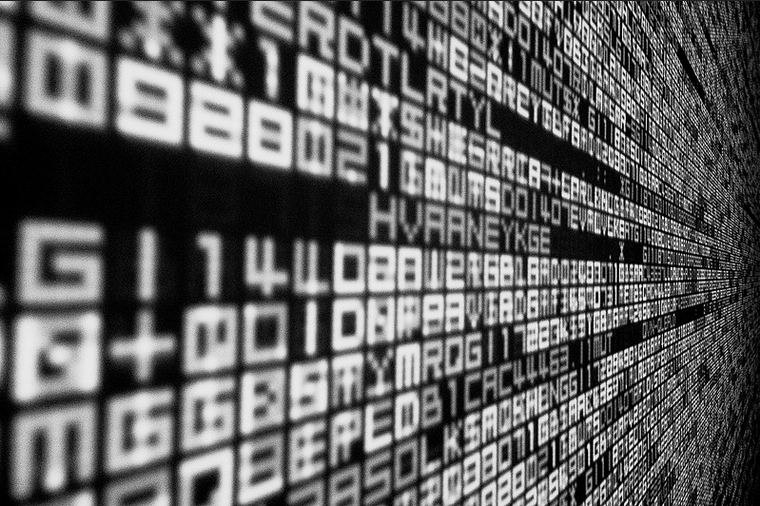5 journalists debunk myths about data reporting
Think you need to be a math genius or coding savant to produce compelling data stories? Think again.
[[{“fid”:”4393″,”view_mode”:”default”,”fields”:{“format”:”default”,”field_file_image_alt_text[und][0][value]”:””,”field_file_image_title_text[und][0][value]”:””},”type”:”media”,”link_text”:null,”attributes”:{“height”:”506″,”width”:”760″,”style”:”width: 400px; height: 266px; margin-left: 10px; margin-right: 10px; float: right;”,”class”:”media-element file-default”}}]]By Nael Shiab
Many Canadian data reporters never thought that they would end up sifting through data and crunching numbers to tell stories. “I wanted to be a foreign correspondent, said Roberto Rocha, until recently the data reporter for the Montreal Gazette. “I wanted to be a war journalist. I didn’t know I had such a dormant geeky side to me.”
Since he started working for the Gazette in 2005, Rocha produced several stories that wouldn’t have been possible without data skills. His January 2015 feature on the most recalled food in the province, for example, showed there’s a food recall in Quebec every three days, on average. Another report uncovered that Quebec’s emergency rooms are so overwhelmed they have to use more stretchers than what government’s records show.
Many media outlets are already immersed in this type of reporting. Global News, the Globe and Mail and the Toronto Star are regularly nominated for international data journalism awards, and in 2012, the Canadian Association of Journalists created a new award category for it in 2012.
But for many, data journalism is a mysterious world full of complex statistics and indecipherable computer codes. This discipline is still shrouded by myths that don’t have any basis in fact.
Myth #1: Data journalism is new
The first data report that we know of was published on May 5, 1821, in the Manchester Guardian (that later became The Guardian).
[[{“fid”:”4390″,”view_mode”:”default”,”fields”:{“format”:”default”,”field_file_image_alt_text[und][0][value]”:””,”field_file_image_title_text[und][0][value]”:””},”type”:”media”,”link_text”:null,”attributes”:{“height”:”570″,”width”:”797″,”style”:”width: 400px; height: 286px; margin-left: 10px; margin-right: 10px; float: right;”,”class”:”media-element file-default”}}]]
At the time, the government was saying that 8,000 children received free education in Manchester. An anonymous source leaked a table to the newspaper that showed enrolment in all of the schools. By analyzing it, reporters discovered the government was in fact paying for 25,000 children from underprivileged families.
The newspaper not only published an article on the difference, but also printed out the list of all the schools, with all the numbers. For the first time, reporters gave readers direct access to the raw data used in the story to draw their conclusions. Data became the proof.
Over the years, the tools have changed. In the 1950s and 1960s, as computers became more affordable, computer-assisted reporting (also called CAR) emerged. The first well-known example of CAR was on November 4, 1952, when CBS used a Remington Rand UNIVAC computer to predict the result of the presidential election.
In the 1970s, the term “precision journalism” appeared. Advocates explained that it provided journalism’s quest for truth and objectivity with a much-needed evidence based scientific approach. Of course, data was crucial.
Nowadays, computers are everywhere and almost all interactions between a citizen and his government are saved electronically somewhere in a database. With the movement for open data, this information is becoming more and more accessible.
“There are two big categories of journalism today,” said Philippe Gohier, web editor-in-chief at L’Actualité. “There’s the qualitative journalism, where we gather the motivations, the emotions of the people, and there’s the quantitative journalism, where we can measure the opinions, the intentions or the facts. They are complementary today, because what would have taken three months to extract as data five years ago, you can now do it in one afternoon.”
Myth #2: If you hate math, forget data journalism
Of course, having some math skills is important for data journalism. You need at the very least to know how to calculate an average, a percentage increase or decrease and know what a median is. However, there’s a fundamental difference between math you hated in school and math of a data reporter: it’s concrete.
“I actually got into journalism in part because it’s was one of the few degrees you could do without Grade 13 math,” said Chad Skelton, data reporter for the Vancouver Sun.
Skelton won the Data Journalism Award for the best individual portfolio in 2014 at the Global Editors Network Summit in Barcelona, Spain. His work has a specific goal: to explain the world in which his Vancouver readers are living in. Data journalism allows him to do it in a customized way for each reader.
For example, his most recent work includes a map of the measles vaccination rates for all the elementary schools in the Vancouver area. He discovered that half of the schools had a rate of less than 90 per cent, which is required to benefit from the “herd immunity” effect. Parents can go to an online map to verify the rate for their children’s school.
For another story, he created an online calculator to help residents estimate how much the new Vancouver congestion tax would cost them. The reader just has to type in his household income and the website makes all the calculations.
Not bad for someone who tried to avoid math in high school and university.
Myth #3: If you don’t write computer code, you’re not a data reporter
Four years ago, Leslie Young joined the Global News’ Data Desk. Since then, she has been applying her skills to explore datasets and find stories in them. She doesn’t know how to code—but it doesn’t prevent her from doing reports of public interest.
Her 2013 feature, “Crude Awakening,” explores 37 years of oil spills in Alberta, which represents more than 60,000 spills. “I analyzed it by company and location, how much was spilled, what was spilled, all these kinds of things,” said Young. “I grouped them and ended up creating maps. You couldn’t have done it without being able to analyze data in some ways.”
She used Microsoft Excel and Microsoft Access to crunch the numbers, programs she learned to use at a one-week boot camp at the University of King’s College. Her analysis uncovered the worst spills in the province—all without a single line of code.
“If you have government dataset that is showing some pattern, you essentially have proof that something is happening,” she said. “The government can’t just brush you off and say ‘Well, you only talked to two guys who said this. They were isolated cases.’ You can actually demonstrate that there’s some kind of pattern happening and that is a pretty powerful tool.”
Myth #4: Data journalism is just for nerds
In 2004, Glen McGregor, a national affairs reporter at the Ottawa Citizen, was threatened with a lawsuit over a mistake he made in a story. “A human source gave me bad information. And it really rattled me,” McGregor said. “I lost confidence in my reporting abilities for a while. I decided that if I was ever going to write another news story, I was going to make sure I absolutely had documents and data to back it up.”
Around the same time, he went to a Canadian Association of Journalists event, in Halifax. He heard Fred Vallance-Jones and Robert Cribb talking about how to do evidence-based, in-depth stories with data journalism. It was like a rebirth for him. McGregor started teaching himself how to use spreadsheets, databases and programming languages.
Seven years later, he broke the story of the robocalls affair during the 2011 federal election and won the 2012 Michener Award for public service journalism.
So don’t worry if don’t consider yourself a geek or a nerd. As Glen McGregor puts it, all it takes to become a data reporter is to be curious, open-minded and willing to learn new things.
Myth #5: Data journalism is the future
Well, this one is probably not a myth. Perhaps you have already heard someone saying that in a few years, all reporters will have to code and will be doing data journalism. That’s probably an exaggeration, but not so far from the truth.
For Steve Rennie, managing editor of Metro’s Ottawa edition and former reporter specialized in using-freedom-of-information laws and computer-assisted reporting for The Canadian Press, the next generation of reporters will have to learn data basics. “It’s kind of given now when you are breaking into the business that you do know how to do some radio and video. And data journalism will be kind of an extension of that.”
However, the most important word in data journalism is journalism. Data is just a part of the equation.
“It’s wonderful to crunch numbers and everything in a database, but you still have to produce a story at the end of the day,” said Rennie. “Data journalism, it’s a part of the process. It’s not the end. It’s sort of a means to get there. You still have to do the reporting.”
All the data reporters we talked to are mostly self-taught. Perhaps that’s why there are so few of them. It’s quite difficult to explore new paths without a guide or a mentor.
However, things are changing for the new generation of reporters. In the past couple of years, Canadian colleges and universities created programs and courses to teach this specialized field.
There’s also Massive Open Online Courses (MOOC), which allows students and curious professionals from all over the world to discover data journalism for free. For example, the European Journalism Centre attracted more than 6,000 students from 170 countries in 2014 with its MOOC, Doing Journalism With Data.
With such democratization in the teaching of data techniques, it’s highly probable that the relatively small population of data reporters will increase in the years to come.
Nael Shiab is an MA graduate of the University of King’s College digital journalism program. He has worked as a video reporter for Radio-Canada and is currently a data reporter for Transcontinental.
Illustration photo by r2hox, via Flickr. Guardian image courtesy The Guardian.




